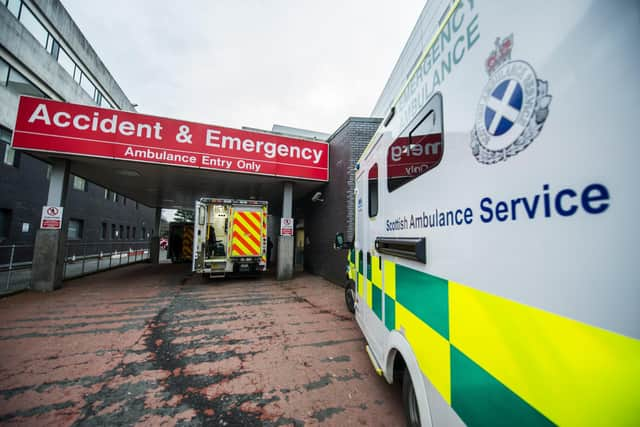NHS health boards reordered to log time and cause of breaches amid spiralling A&E waiting times across Scotland
A letter was issued to all health board chiefs on Tuesday by NHS Scotland chief operating officer John Burns listing five key directives for staff to take to clamp down on spiralling waiting times.
The move came as it was revealed at First Minister’s Questions on Thursday that a woman in Ayrshire had needed to wait 84 hours for hospital treatment.
Advertisement
Hide AdAdvertisement
Hide AdFigures released this week showed just 63.5 per cent of patients were seen and subsequently admitted or discharged within four hours at A&E departments in the week up to September 11 – a record low for Scotland.


In a written letter, Mr Burns set out five actions to be taken around A&E, including an aim to improve pre-noon and weekend discharge, as well as employing an emergency physician-in-charge wherever possible to provide dedicated leadership in emergency departments.
Health boards have been urged to monitor any breaches of the waiting time target by logging the time and cause, and to eliminate all 12-hour waits. Mr Burns noted a significant percentage of breaches where happening between 4am and 4.30am.
The Scottish Government has set a target that 95 per cent of people attending A&E should be seen, admitted, discharged or transferred within four hours.
"These are difficult and challenging times and the national team stand ready to support your improvement focus and will continue to work with your teams to develop and deliver improvement actions,” Mr Burns wrote.
"It is important that we share our learning and what is making a difference.”
A ‘national learning workshop’ will be held on October 19 for health board teams to share results ahead of a winter period that health secretary Humza Yousaf has already acknowledged will be “extremely challenging”.
Details of the letter were revealed as Covid cases in Scotland fell, despite the country still having the highest infection levels in the UK.
Advertisement
Hide AdAdvertisement
Hide AdThe latest weekly figures from the Office for National Statistics (ONS) indicated that in the week ending September 14 some 98,000 people in Scotland had the virus – equivalent to around one person in 55.
That compares to about one in 45 people the previous week.
While there were rises in infection levels in both England and Wales, the proportion of people with the virus in both nations was still lower than in Scotland.
The ONS said an estimated one in 70 people in England had the virus in the week ending September 14, with one in 75 people in Wales also infected.
A fall in infections in Northern Ireland, meanwhile, means that in the week ending September 14 around in 80 people were estimated to have Covid-19.
Sarah Crofts, deputy director for the Covid-19 infection survey at ONS, said:“It is too early to see if these changing trends will continue and we will monitor the data closely to see any impact of the return of schools over the coming weeks.”
Comments
Want to join the conversation? Please or to comment on this article.